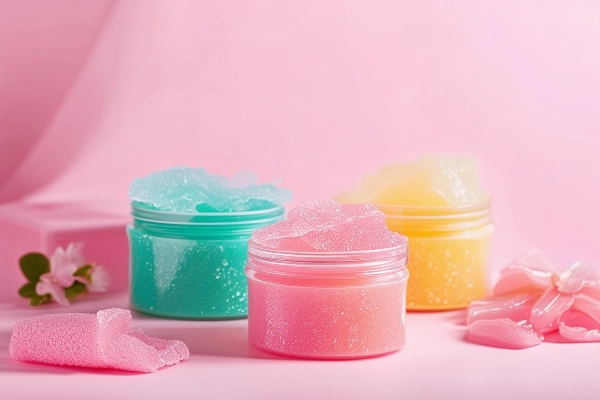Introduction to solid paraffin
Paraffin wax is a colorless and odorless solid substance that is extracted from oil or coal in the petrochemical industry. Paraffin wax is a mixture of saturated hydrocarbon molecules consisting of 20 to 40 carbon atoms.
In chemistry, paraffin is usually associated with the word alkane, which has the chemical formula CnH2n+2. The name of this substance is derived from the Latin word affinis + Parum, which means lack of reaction and refers to the non-reactive nature of paraffin.
This paraffin, which is considered one of the most widely used chemical substances in the industry, is obtained during various steps performed on slack wax. Accurate and correct performance of all these steps is necessary in the production of high-quality solid paraffin
The history of paraffin
It can be extracted from coal, wood, and shale oil, but it primarily comes from the distillation of petroleum, first distilled in 1807 by geologist Abraham Gessner.
Paraffin wax was first created in 1830 by a German chemist named Carl van Rickenbach. He tried to separate and refine the petroleum substances that are naturally present in crude oil.
The production of paraffin wax increased in the early 20th century due to the growth of the meat and oil packing industry, and this caused paraffin wax and stearic acid to be produced as byproducts.
Solid paraffin production process
This paraffin is one of the widely used and multi-purpose materials in various industries, which is obtained from oil.
The production method of this paraffin is done by pressing steel plates to bagged slack waxes. Also, solid paraffin with different percentages of fat such as 0.5 to 1, 1 to 3, 3 to 5, 5 to 7 and crystal and microcrystal solid paraffin are also available in the market.


Properties of paraffin wax
The melting point of paraffin wax is between 46 and 68 degrees Celsius and its density is around 900 kg/m3. Paraffin wax does not dissolve in water, but it can be dissolved in ether, petroleum substances and esters (high salts).
Paraffin wax is not easily affected by chemical reactions, but it burns easily. The heat of combustion of paraffin wax is about 42 megajoules/kg.
When paraffin wax is melted, it flows quickly, and because of this property, it can be used in industrial and household thermostats, and especially car thermostats.
Types of solid paraffins
Solid paraffins are divided into two categories: light paraffin (macrocrystal) and heavy paraffin (microcrystal). Paraffin wax is solid at normal room temperature, but it starts to melt at a temperature of more than 37 degrees. The boiling point of paraffin wax is 370 degrees Celsius (698 degrees Fahrenheit).
Macrocrystal (light paraffin)
Crystalline paraffin, or light paraffin, is less well-known due to its specific uses, and its oil and fat content varies. This type of paraffin is obtained by sweating.
microcrystal (heavy paraffin)
Microcrystalline paraffin, or heavy paraffin, is more well-known and more than 90% of paraffins on the market are of this type. This paraffin can also have a variable fat and oil percentage based on the customer’s order and different applications.
Sanitary solid paraffin
Sanitary solid paraffin is produced for cosmetic, sanitary and medicinal purposes. This type of paraffin has a lower oil content, which leads to higher quality and increased efficiency in related products, including creams and lotions. Colorless, odorless, and the ability to create flexibility in health products are among the features of this grade.
Edible solid paraffin
Edible solid paraffin is usually used in food and livestock and poultry industries. This type of solid paraffin is efficient in food production due to its pure materials without non-edible additives. Also, edible paraffin is used as a food preservative in various industries and is of great importance in human and livestock nutrition.
Application of solid paraffins
Paraffin wax is also widely used in various industries such as candle making, waterproofing of paper and fabric, various polishers, rubber industries, etc. In addition to this medicinal type, it is used in the production and manufacture of various health products.
It is used in beauty salons as a skin softener and for hands and feet. Also, it is used therapeutically as a pain reliever in joints and muscles.
Paraffin wax is used in the production of car tires to insulate against the ozone layer and also to prevent tire wear and tear.
This material is also used in the production of colored pencils, fertilizers and pesticides. Granular solid paraffin is used in the rubber industry, and in the past centuries, it was used as a source of light in lamps and lanterns. This material is used as glue, waterproof material, wax paper and waterproof coating for wood and is also used in defense industries.
Paraffin wax is also used in textile, paper making, food, matchmaking and paint industries


How to store solid paraffin
Paraffin requires special storage conditions to avoid fire hazards. To store paraffin, it should be kept away from heat and heat, because this substance can catch fire. When using and dealing with paraffin, it is better to use clothing and face protection so as not to come into contact with its harmful vapors and to prevent inflammation and irritation of the skin and eyes in case of continuous contact with the skin.
last word
Solid paraffins with multiple characteristics and diverse applications are used as versatile and vital materials in various industries. This combination covers scientific and industrial fields well. Also, it plays an important role in daily life and industry due to its features such as odorless and colorless.
